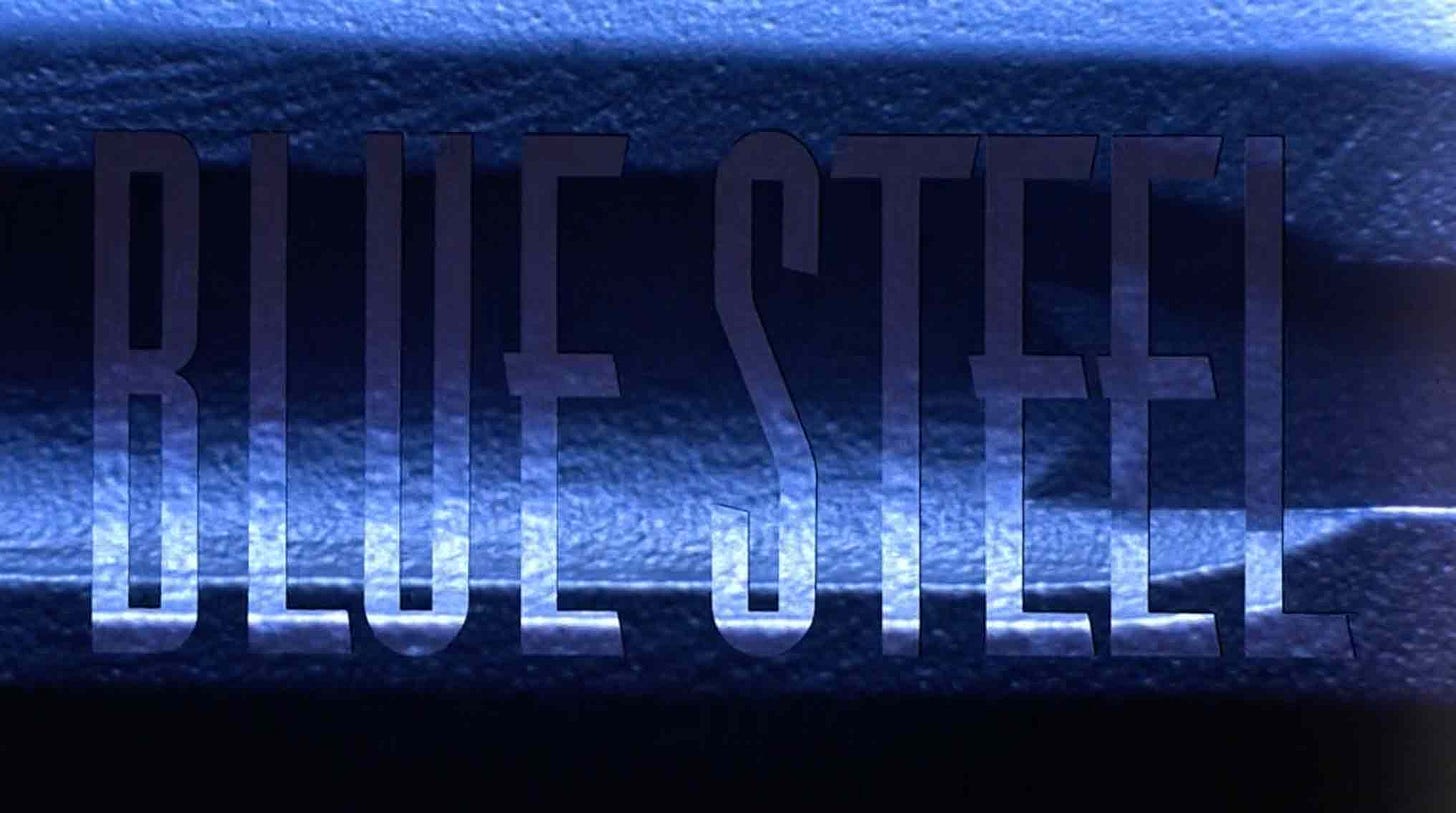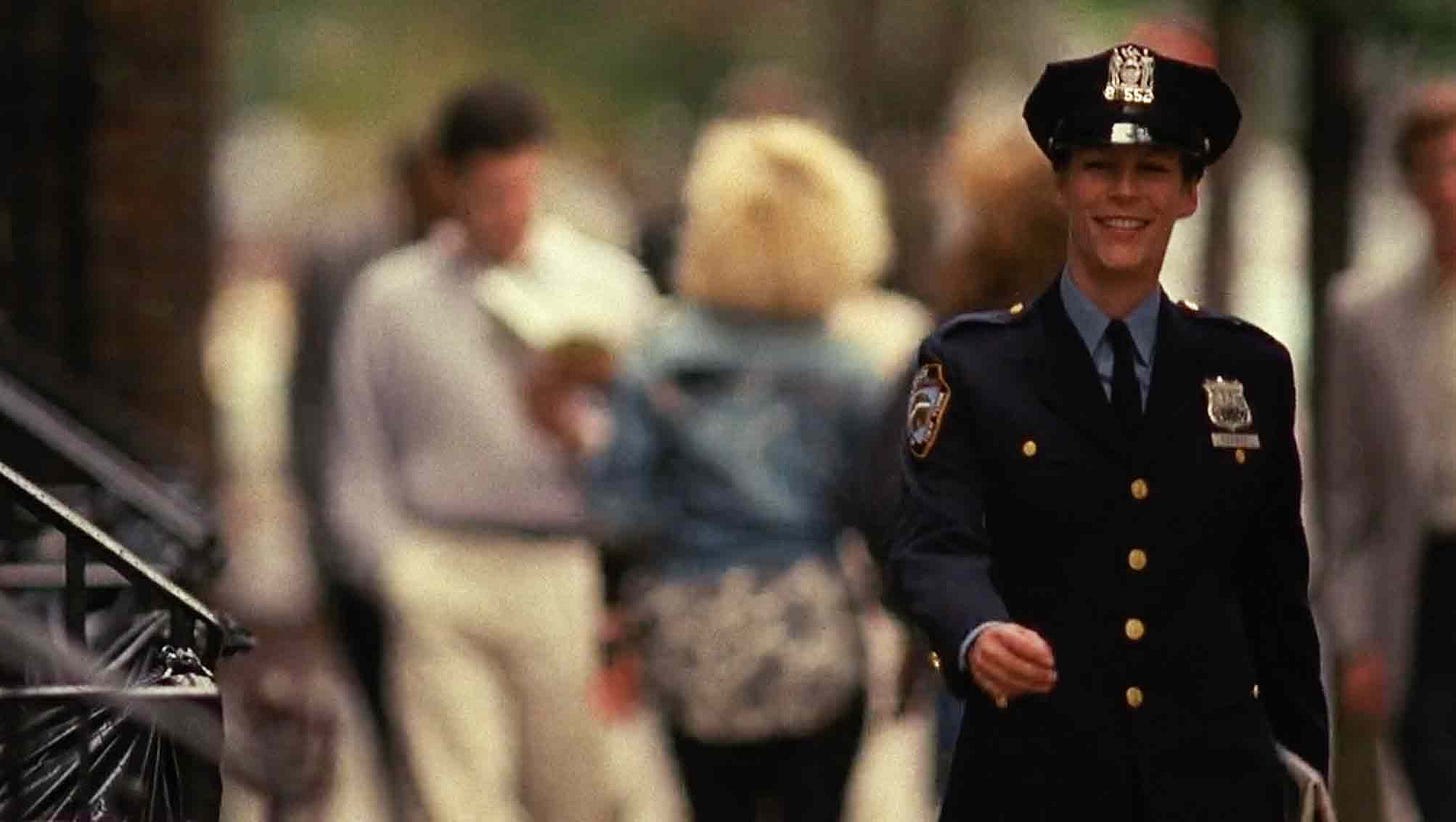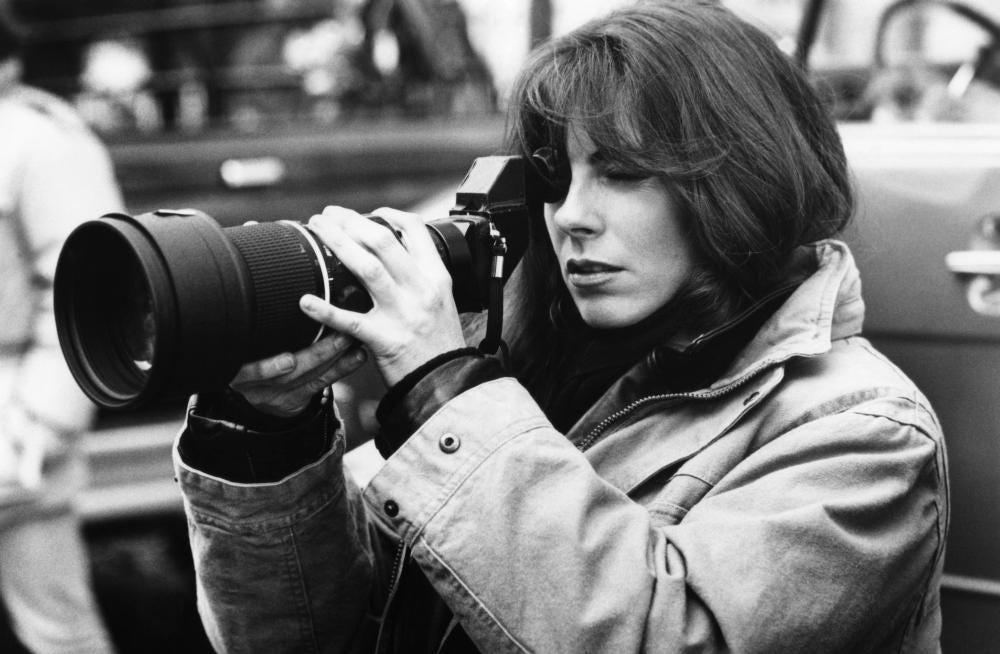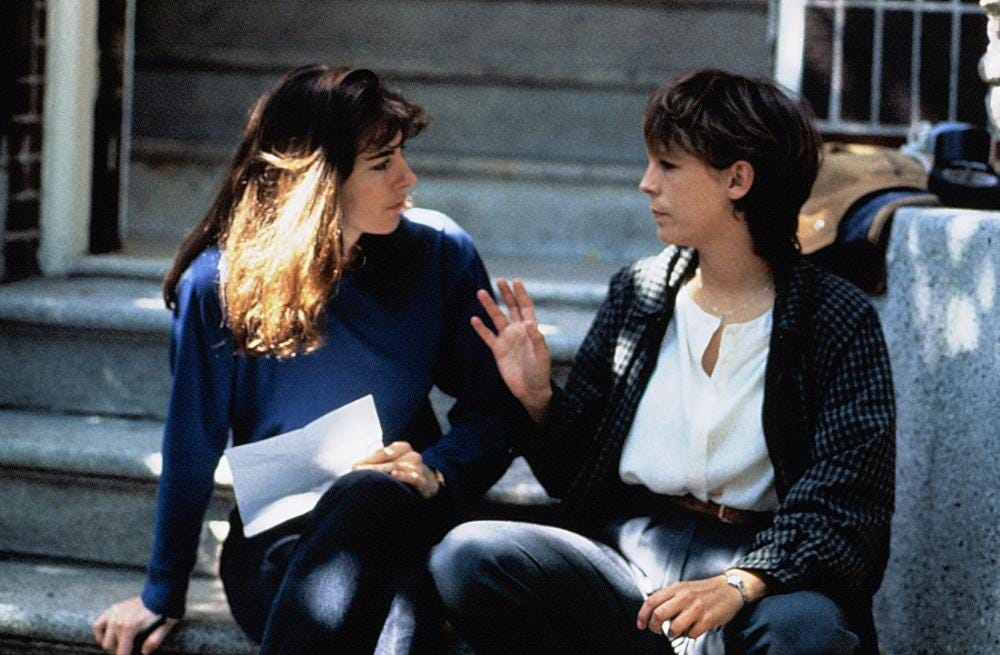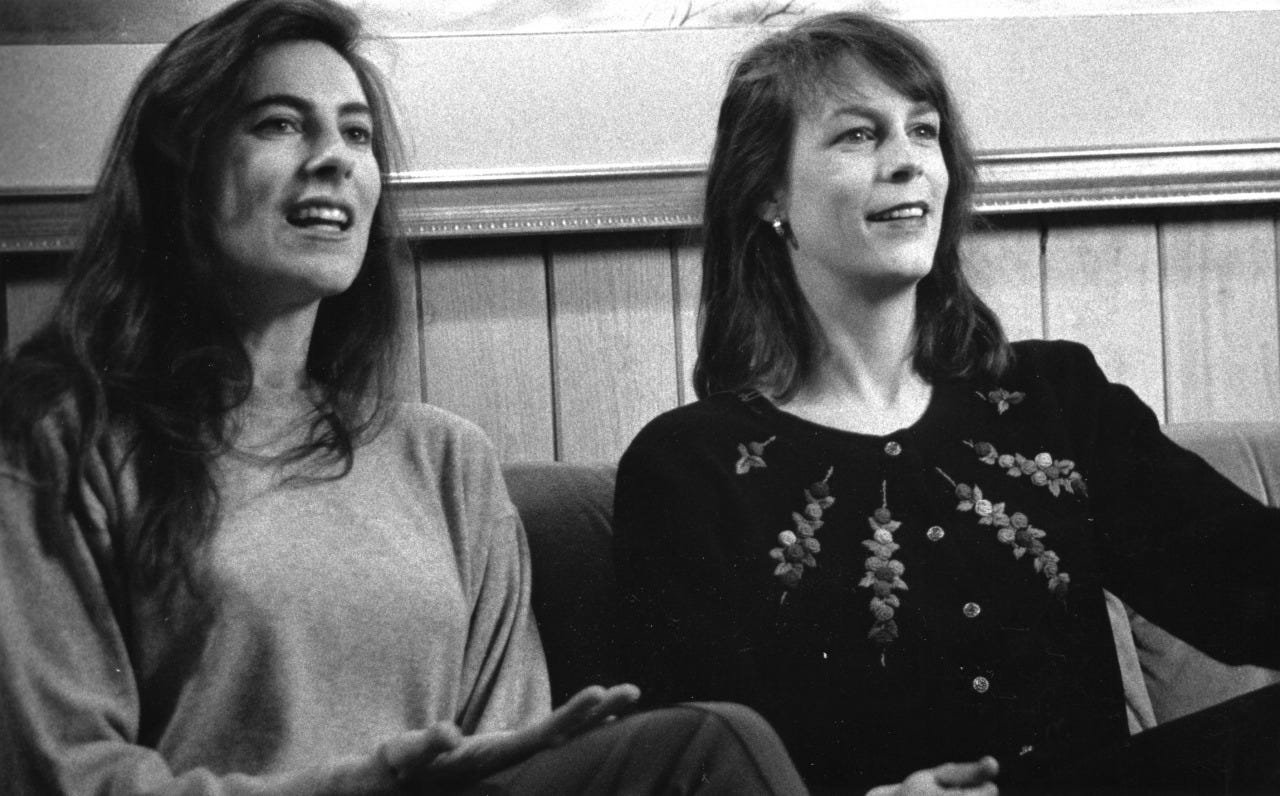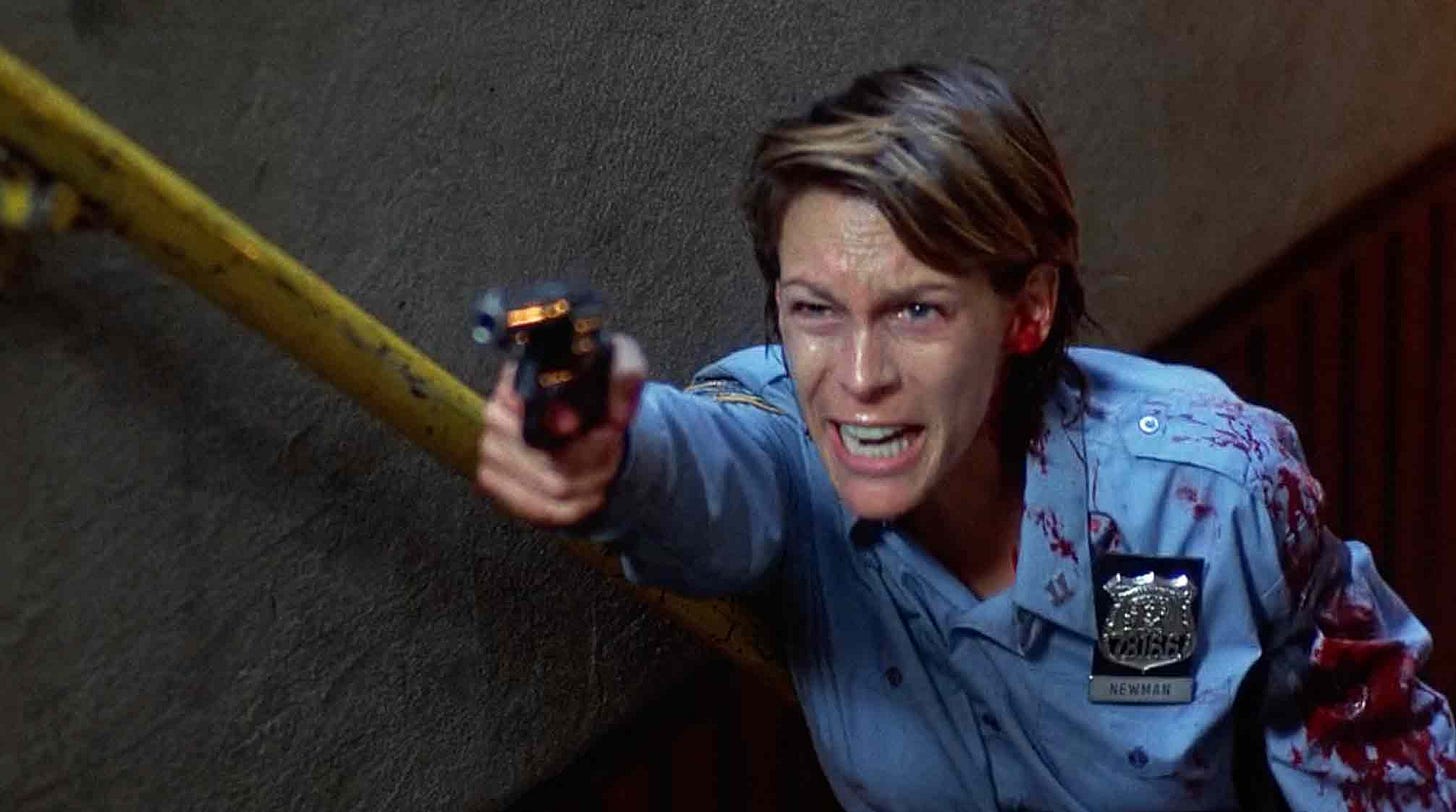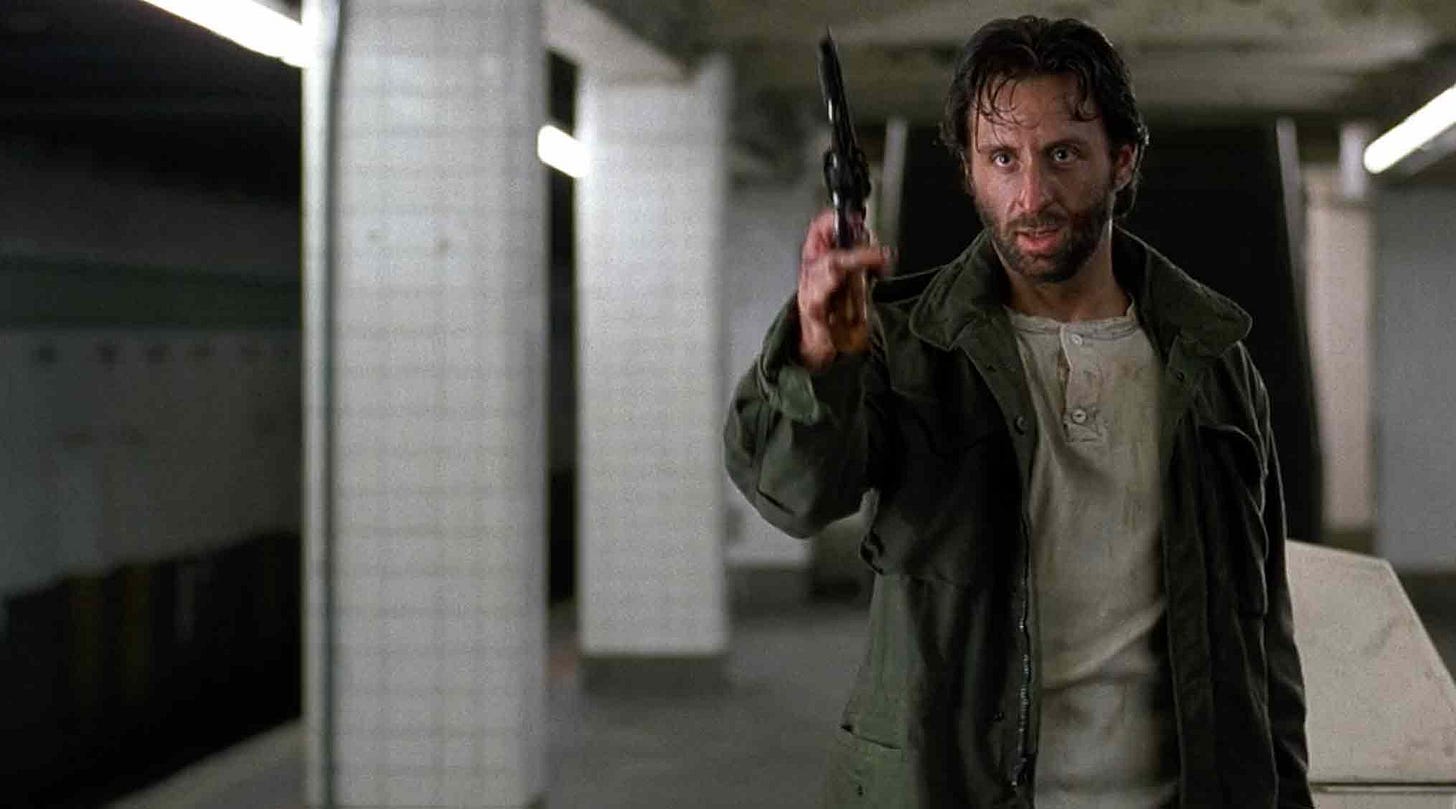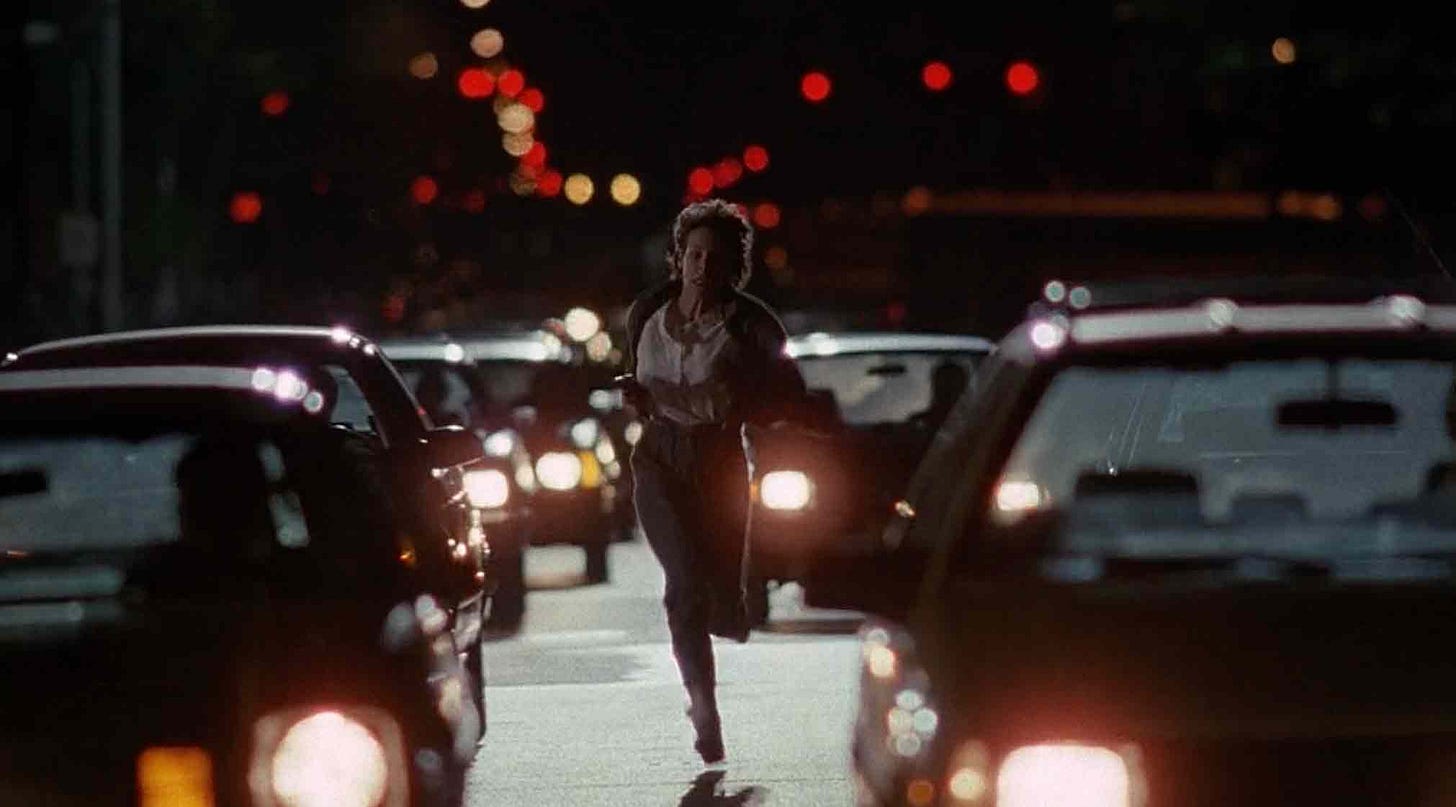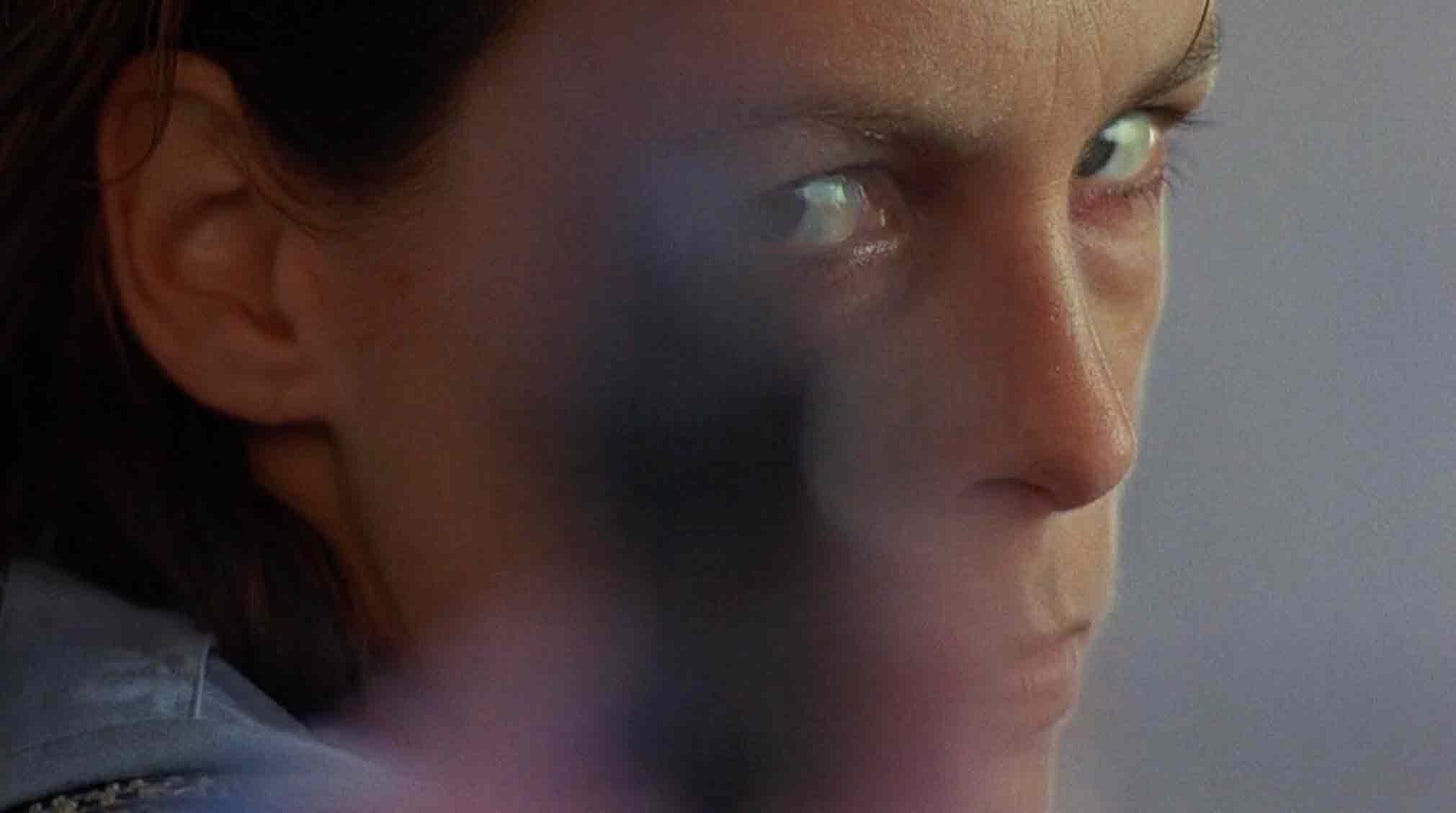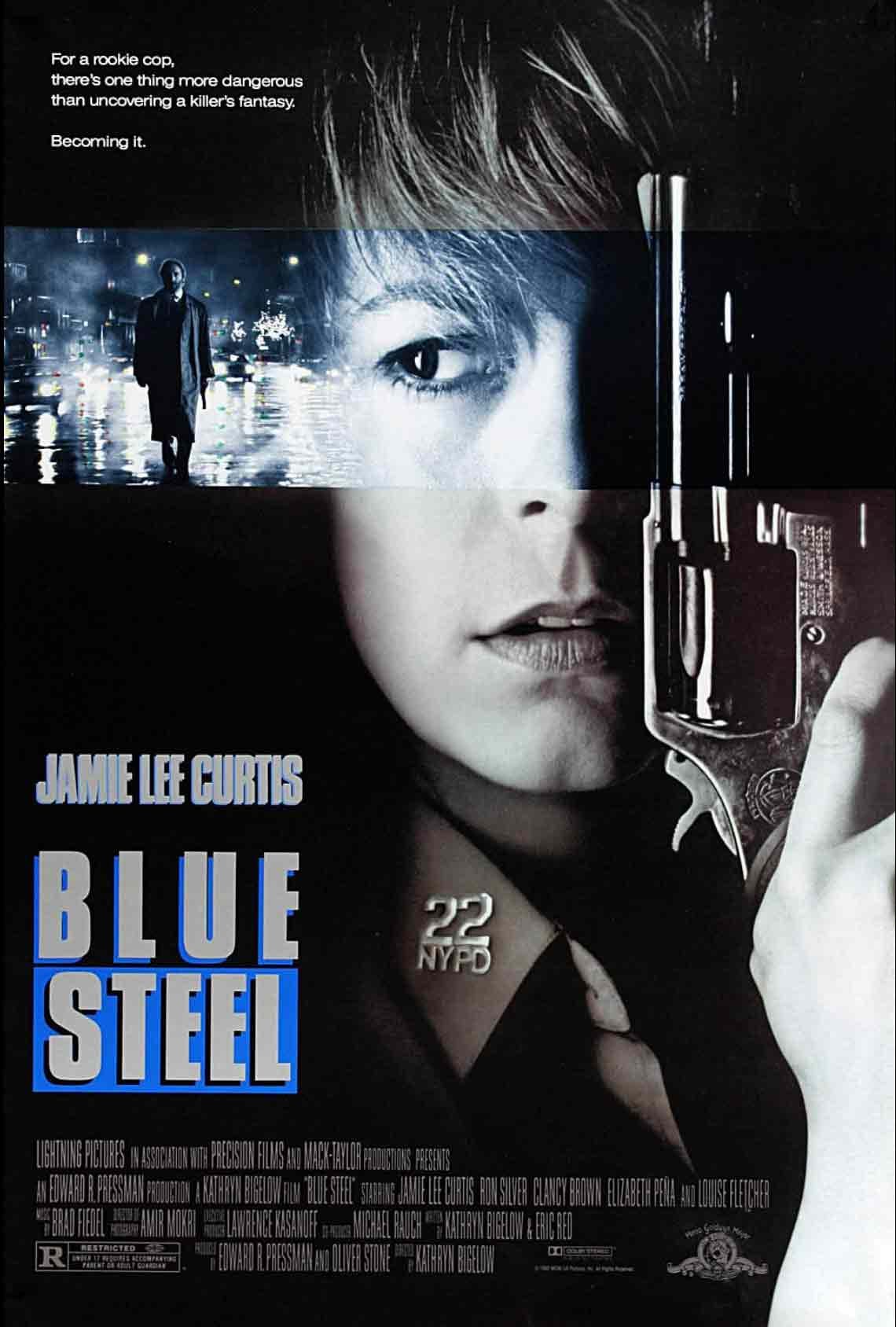Buy or Rent Blue Steel HERE
Physical copy HERE
Many years ago I created a column on JoBlo.com called The Best Movie You Never Saw, which continues to this day. It’s a fun legacy to have left the site, but I mainly created it because I wanted to write about movies I loved, specifically those that aren’t all that well-known. Many of the films we love aren’t mega-blockbusters and household favorites, but rather back-shelf titles that didn’t achieve the level of box-office success that made them unforgettable to the average moviegoer or they simply didn’t connect with an audience when released, due to a long list of varying factors.
With that in mind, I am going back to the well to discuss movies I love, in the same vein as the column I created a decade ago. As I get older, I’ve discovered more and more that the up-and-coming movie aficionados, the young viewers who see film as an art, rather than just a way to pass the time, are increasingly missing out on some of the great films as the library continues to grow, sadly with a whole lot of fluff that clogs the drains. For those readers, consider this your film drano. For everyone else, it’s a place to champion some of the great and underrated films that we love, shining a light on them and hopefully inspiring the next generation to carry the torch forward into the future.
The inaugural column kicks off with Kathryn Bigelow’s Blue Steel, a film I’ve been dying to highlight for the longest time and am proud to finally do so.
When Was It Released: March 16, 1990
Who Made It: Directed by Kathryn Bigelow. Written by Bigelow and Eric Red. Produced by Lawrence Kasanoff, Oliver Stone and Edward R. Pressman. Made for Vestron and Distributed by MGM.
Who’s In It: Jamie Lee Curtis, Ron Silver, Clancy Brown, Elizabeth Pena, Louise Fletcher, Philip Bosco, Kevin Dunn, Richard Jenkins, and Tom Sizemore (in his first onscreen role).
What’s It About: Jamie Lee Curtis plays Megan Turner, a fresh-to-the-force New York City police officer with a tough, yet vulnerable charm that makes her both approachable and dangerous if provoked. There’s a humor to her character as well, but it doesn’t last long, as things get dark pretty quickly when she meets Ron Silver’s Eugene Hunt, a commodities trader who suddenly awakens the psychopath within when he bears witness to Turner in a shootout at a supermarket, causing him to begin his own murder spree and obsession with the officer, eventually leading to them forming a romantic bond. However, his motives quickly become evident, and thus begins a game of cat-and-mouse as Turner attempts to bring the serial killer to justice, even as he disrupts every aspect of her life.
How It Was Made: Bigelow had formed a collaborative relationship with writer/director Eric Red (The Hitcher), which led to her first directing gig, the midwest vampire flick Near Dark, starring Bill Paxton and Lance Henriksen, itself a cult classic. Bigelow held firm to being behind the camera and was able to pivot to Blue Steel, based on a script by herself and Red, which won the support of director Oliver Stone, who helped Bigelow get the job, while also serving as a producer alongside Ed Pressman.
Shot all on location in New York City in 1989, having secured Curtis to take the lead as Megan Turner, Bigelow set out to make a tough action film that focused on a female lead in what was traditionally a male-led genre. In what would normally be a cop thriller with, say, Bruce Willis or Keanu Reeves (whom she’d work with next on Point Break), Bigelow framed the film to go against genre stereotypes, but not in an effort to make a statement, but to flip the script and see what happens.
“I was interested in making a ‘woman’s action film’ so I was interested in kind of a permutation on a genre that had been predominantly occupied by men, very simply for the reason that I believed that there were certain elements, like fear and self-preservation, which broke down along universal lines. I kind of wanted to turn the cop genre, so to speak, on its head, and put a woman at the center of it, who’s sort of an “everyman”, a character who not only women, but men, could identify within the context of an action film, as opposed to the woman being the girlfriend or the victim, I wanted her to be central to the story.” - Kathryn Bigelow, BBC2 Interview (1990)
Blue Steel made its debut at Sundance in 1990, a rare move for a Hollywood cop thriller. It didn’t make a tremendous splash, nor did it make a killing at the box office when released a few months later. Both Curtis and Silver received praise for their performances, with Bigelow causing enough of a stir to get another directing gig, 1991’s Point Break, which would become an action classic. However, as time wore on and Bigelow’s career continued to soar, fans began to seek out her past work and Blue Steel has emerged, over time, to cult status, ironically getting the kind of recognition it was aiming for when released, which is to be appreciated as a fun, moody, violent, goofy, and exhilarating action flick.
“Why should guy directors have all the fun? My interest was in making a women’s action film, but one which men could also identify with.” - Kathryn Bigelow, Toronto Globe and Mail (March, 1990)
Why You Should Watch It: Early in my film education, as I began to revisit my favorite filmmakers, Bigelow was a quick study. Point Break was one of those films that hit me hard, and as I began to dissect film as art, not just entertainment, my great hope was to discover more films by my favorite directors that were akin to their more popular ones. It was always a win to find that a filmmaker had a number of early gems that preceded their well-known works, and Bigelow was no exception. Discovering both Near Dark and Blue Steel were like unearthing treasures.
The first notable aspect of Blue Steel that stands out is the two leads in the film; Curtis and Silver. Curtis, up to that point, had carved out a career as a scream queen and a comedy actress, having starred in films like John Carpenter’s Halloween, The Fog, Prom Night, Trading Places, and A Fish Called Wanda. Blue Steel was a step into a completely new genre for the actress and one she turned out to be well-suited for.
Curtis makes for an outstanding action star lead in Blue Steel, emulating all the usual tics you’d expect from a male counterpart, yet still showing a feminine side that is befitting of her character. She’s a beautiful, single woman living in a big city, now charged with serving and protecting it, and Curtis plays Turner with a raw, yet vulnerable strength. There’s a scene in the film where she arrests her own father for abusing her mother, and it serves as a kind of wish-fulfillment moment for her character, a refreshing inclusion in the genre that rarely sees the light of day, and Curtis sells it with perfection.
"One of the reasons I took this job is because I love using my physicality and my strength in a film, and I don't often get to do that. In my need to go off and do more dramatic films, I haven't been able to use it. I guess 'A Fish Called Wanda' used it in a different way, but this was a real action film, and a wonderful thing for me." - Jamie Lee Curtis, Roger Ebert Interview (Sundance 1990)
For Silver, who was mostly known as a character actor, the part of Eugene Hunt was a chance to really let loose, and let loose he does. Silver gives a maniacal, psychotic, and beautifully evil performance in Blue Steel, giving Curtis a great cat to her mouse. Without that dynamic, Blue Steel would’ve fallen apart. Thankfully, they both shine as protagonist and antagonist, creating a multi-layered relationship that makes the stakes feel real, even if the premise gets silly as it goes on.
Clancy Brown is low-key cool in Blue Steel, which is a refreshing take for the actor who is mostly known for his over-the-top and hardcore performances in everything from Highlander to The Shawshank Redemption. He is basically the love interest in the film, in what would normally be played by a female in a male-led cop thriller, which is a fun dynamic to watch play out.
There are two other aspects to Blue Steel that greatly contribute to its success, outside of the actors and the direction by Bigelow. The first is composer Brad Fiedel’s score, which is a dark, moody, oozing score that gives Blue Steel as much of its identity as anyone else’s contributions. Fiedel is known for his work with James Cameron (Bigelow’s ex-husband and frequent collaborator), particularly The Terminator franchise, but Blue Steel remains one of his finest works that rarely gets the credit it deserves.
The second is the absolutely gorgeous cinematography by Amir Mokri, who had the benefit of shooting all on location, capturing the landscape of 1989 New York City with depth, personality, and vibrant energy that frequently goes underserved in the new era of studio lot sets and green screen. Blue Steel benefits tremendously from Mokri’s work, giving the many macro-style close-ups and detailed, gritty resonance that seems to have diminished in the new digital era. Mokri’s work here makes all the difference and the film would not be the same without him. He would later flex those skills on films like Man of Steel, The Salton Sea, and Lord of War, amongst others.
"If you said the director's name was Bob Bigelow, I think the movie would elicit the same response. I don't think people would say--wait a minute, a man didn't direct this movie. But there are some differences. I'm an actress, and therefore maybe I infused more sensitivity into the character than if this was a man's role. I liked the fact that I was scared. I really loved the fact that in that opening scene in the market when she shoots the guy, she's dying, she's so scared, and I loved that she's not just busting through doors, that she's scared, because it's human nature to be scared." - Jamie Lee Curtis, Roger Ebert Interview (Sundance 1990)
Of course, the biggest contributing factor to Blue Steel’s success is Bigelow’s surehanded direction. While we want to pretend that all sexes are equal in every way possible, that simply isn’t true. Physiologically and psychologically, women are different than men in many ways, despite the ongoing trend to uproot the scientific fact of it. Male directors have predominantly shaped the action genre, which is by and large, a male-focused genre. Women frequently do not gravitate toward the action genre. And, hey, that’s okay. Ninety-Eight percent of the US Army infantry is led by males (an all-volunteer force), while females make up only ten percent of incarcerated individuals in the US. Obviously, men and violence go hand-in-hand a lot more than women do when stacked against the statistical evidence.
Which is what makes Bigelow such a radical outlier in Hollywood. She has directed some of the ballsiest, most badass, violent action films that the genre has ever seen, right down to Blue Steel. It’s not that she simply made the film, but that she made it with the same sensibilities you’d expect from a male director and, in most cases, better than what a male counterpart would do. With Blue Steel, Bigelow leans into tender moments, never to the point of being some kind of feminist jab at the patriarchy, but rather to show an honest portrayal of female friendships and home life without trying to make anyone feel guilty about it, lending an air of authenticity, rather than a point blank finger wag to drive home a point on gender.
In the same swing, Bigelow stages gunfights and violence with the same sensationalized swagger that her contemporaries like Walter Hill, John Woo, Tony Scott, or John McTiernan do (or did). She doesn’t try to make it more palatable, toned down, or somehow redirected from the genre it’s in. No, Bigelow stages her action sequences with the same intensity, rawness, over-the-top bravado, and macho maneuvering that has perpetuated the genre from the start. The gunshots are frequently in slow motion or in a tight close-up, showing every ripple of smoke and recoil, with blood squibs exploding across the screen in a visceral shower of violence. Bigelow, for whatever reason, was gifted with the visual acuity of a true action auteur, which just happens to be exceedingly rare for a female.
Blue Steel isn’t particularly revolutionary in terms of the genre. In fact, it’s very familiar. But, the way it’s staged, filmed, acted, and (especially) directed, Blue Steel is a game changer. It’s one of the stronger cop thrillers of that era, even if just as silly, but it also serves as a rallying call not only for female leads, but female directors. Bigelow set a stage that opened the door for filmmakers like Karyn Kusama (Destroyer), Patty Jenkins (Monster, Wonder Woman), Lexi Alexander (Punisher War Zone), etc. The field is still remarkably small, and Bigelow still reigns supreme (and it’s not even close), but the road for female action directors has been paved nonetheless and much of it started with Blue Steel. You could argue that it began with Near Dark, but Blue Steel has the added benefit of experimentation on flipping the script with a female lead in this particular genre, making it not only groundbreaking but just a fun damn movie.
Blue Steel may not change your life, but as a cop thriller on a late Friday night, it’s a magnificent watch. It’s simply a well-made film by a group of talented folks, regardless of what’s between their legs. However, it can’t be understated just how exceptional Bigelow is at understanding the action genre aesthetic, as she’s proven time and time again with films like Point Break, Strange Days, K-19: The Widowmaker, The Hurt Locker, and Zero Dark Thirty. She is unmatched and unparalleled in her understanding of violence and how to portray it artistically and Blue Steel is the film that lit the fuze on her tremendous journey throughout the genre in her career.
“I think, in one sense, we’re motivated by violence or resistance to violence, by profound emotional response, that’s a better way of maybe putting it. I think film, when it’s most successful, can create profound emotional response.” - Kathryn Bigelow, BBC2 Interview (1990)
Best Scene: The best scene for Blue Steel is the end shoot-out, as it really capitalizes on what we’re actually there to watch. Sure, there are plenty of clever, cool, weird, and fucked up scenes in Blue Steel, but a cop thriller frequently hinges on how it pulls off the finale. I’ve heard many reviewers say that Blue Steel doesn’t pull off the ending, and I couldn’t disagree more. It’s not a complex shootout or confrontation, but it is one that you’re ready for by the time you get there, and Bigelow stages it like a John Woo-styled ballet of chaos with moody depth, macro shots, and that atmospheric Brad Fiedel score carrying it all on its back. It’s not John Wick, nor should it be, but rather a taut, bloody finish to an implausible, yet convincing action thriller.
That said, I can’t include it here, as I don’t want to tempt spoiling those of you that haven’t seen the film, so I’m including the opening shootout with a then-unknown Tom Sizemore. It’s the scene that sets everything in motion and is a small tease of things to come later in the film.
Buy or Rent Blue Steel HERE
Physical copy HERE






